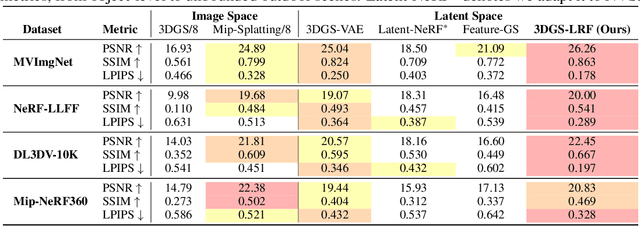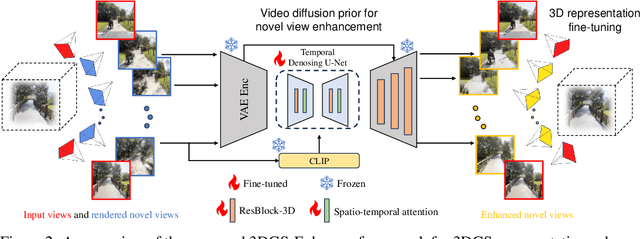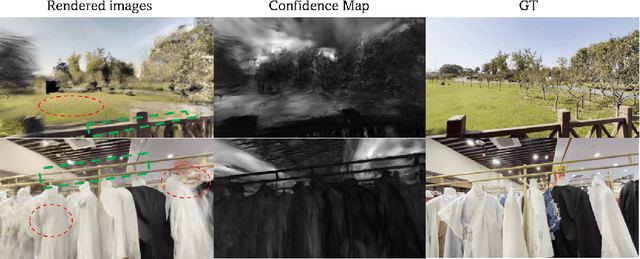Chaoyi Zhou
Bézier Splatting for Fast and Differentiable Vector Graphics
Mar 20, 2025Abstract:Differentiable vector graphics (VGs) are widely used in image vectorization and vector synthesis, while existing representations are costly to optimize and struggle to achieve high-quality rendering results for high-resolution images. This work introduces a new differentiable VG representation, dubbed B\'ezier splatting, that enables fast yet high-fidelity VG rasterization. B\'ezier splatting samples 2D Gaussians along B\'ezier curves, which naturally provide positional gradients at object boundaries. Thanks to the efficient splatting-based differentiable rasterizer, B\'ezier splatting achieves over 20x and 150x faster per forward and backward rasterization step for open curves compared to DiffVG. Additionally, we introduce an adaptive pruning and densification strategy that dynamically adjusts the spatial distribution of curves to escape local minima, further improving VG quality. Experimental results show that B\'ezier splatting significantly outperforms existing methods with better visual fidelity and 10x faster optimization speed.
Latent Radiance Fields with 3D-aware 2D Representations
Feb 13, 2025



Abstract:Latent 3D reconstruction has shown great promise in empowering 3D semantic understanding and 3D generation by distilling 2D features into the 3D space. However, existing approaches struggle with the domain gap between 2D feature space and 3D representations, resulting in degraded rendering performance. To address this challenge, we propose a novel framework that integrates 3D awareness into the 2D latent space. The framework consists of three stages: (1) a correspondence-aware autoencoding method that enhances the 3D consistency of 2D latent representations, (2) a latent radiance field (LRF) that lifts these 3D-aware 2D representations into 3D space, and (3) a VAE-Radiance Field (VAE-RF) alignment strategy that improves image decoding from the rendered 2D representations. Extensive experiments demonstrate that our method outperforms the state-of-the-art latent 3D reconstruction approaches in terms of synthesis performance and cross-dataset generalizability across diverse indoor and outdoor scenes. To our knowledge, this is the first work showing the radiance field representations constructed from 2D latent representations can yield photorealistic 3D reconstruction performance.
3DGS-Enhancer: Enhancing Unbounded 3D Gaussian Splatting with View-consistent 2D Diffusion Priors
Oct 21, 2024



Abstract:Novel-view synthesis aims to generate novel views of a scene from multiple input images or videos, and recent advancements like 3D Gaussian splatting (3DGS) have achieved notable success in producing photorealistic renderings with efficient pipelines. However, generating high-quality novel views under challenging settings, such as sparse input views, remains difficult due to insufficient information in under-sampled areas, often resulting in noticeable artifacts. This paper presents 3DGS-Enhancer, a novel pipeline for enhancing the representation quality of 3DGS representations. We leverage 2D video diffusion priors to address the challenging 3D view consistency problem, reformulating it as achieving temporal consistency within a video generation process. 3DGS-Enhancer restores view-consistent latent features of rendered novel views and integrates them with the input views through a spatial-temporal decoder. The enhanced views are then used to fine-tune the initial 3DGS model, significantly improving its rendering performance. Extensive experiments on large-scale datasets of unbounded scenes demonstrate that 3DGS-Enhancer yields superior reconstruction performance and high-fidelity rendering results compared to state-of-the-art methods. The project webpage is https://xiliu8006.github.io/3DGS-Enhancer-project .
 Add to Chrome
Add to Chrome Add to Firefox
Add to Firefox Add to Edge
Add to Edge